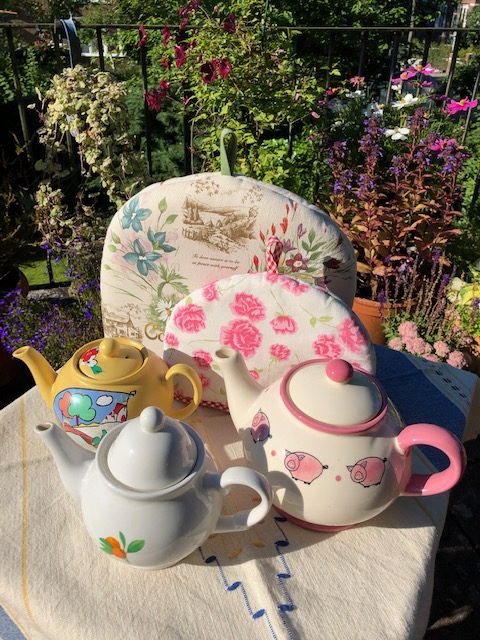At the request of several of my clients to try a new English teashop in Hamburg Altona to see how authentic it was, I recently went along one afternoon and had a “cream tea”. The experience reminded me once again of how many differences there are between the UK and Germany in the tea culture.
I would say that “teatime” in the UK is far less popular (and a little outdated) than the ritual “coffee and cake” in Germany. Life has changed and with most people working and the surge of the coffee culture, people might pop in for a quick coffee, but having tea doesn’t fit with modern day working life. That is to say, people just “have a cup of tea” – a tea bag in a mug of hot water and a dash of milk. My small collection of teapots gather dust in my cupboard and my “tea cosy” is lost in a drawer somewhere! Generally people have their main meal at lunchtime if they don’t work, or in the evening when they return from work, so teatime doesn’t really fit in anywhere.
If you travel to Devon and Cornwall in the Southwest of England, you will find many cafés or teashops offering Cornish or Devonshire “Cream Teas”. This has become part of the tourist business, but as the scones are usually homemade and the clotted cream is local, it is really delicious. A Cornish or Devonshire Cream Tea consists of a pot of tea, scones with (strawberry) jam and clotted cream. The scone is cut in half and the clotted cream is spread over the scone, followed by a “dollop” of strawberry jam.
The largest clotted cream producer in the UK is based in Cornwall. The cream has a long history – originally made to reduce the amount of waste from the milk produced by farmers in the Southwest of England – and is similar to a middle eastern delicacy called Kaymak or a Mongolian cream called Urum. When Brits go on holiday to Devon or Cornwall they often send small tins of clotted cream by post to friends or relatives as a gift.
Contrary to what many Germans think, tea bags do not affect the quality of the tea and more or less everyone in the UK uses “tea bags”. Loose tea is rarely used. All the best tea producers sell their tea in “tea bags” which is also much more user friendly. Most Brits bring their tea back with them from the UK as German brands just do not taste the same. The most popular UK brands of black tea are PG Tips, Tetley, Typhoo, Twinings and Yorkshire Tea. We never “cook” tea! Tea kept for a long time tastes horrible. Germans put their teapot on top of a candle to keep it hot. We make a completely fresh pot if we want to drink more after half an hour or so! Brits mostly have fresh milk with their tea, putting the milk in first, followed by the tea.
Other popular cakes that are traditionally found in English teashops, apart from scones, include Victoria Sandwich, Battenburg cake, (toasted) teacake, carrot cake, fruit cake. Shortbread might be included as might “crumpets” – delicious toasted and spread with butter.
So getting back to the English teashop in Hamburg, the scones and clotted cream were delicious, probably the best I have tasted in Germany so far and the Earl Grey tea was good. Everything was tastefully served with a pot of tea per person. I would definitely go back again – so I can say it was pretty authentic. And, by the way, if you come to my office for business English training, you are offered English tea (“a cuppa”) and biscuits.
Vocabulary:
teatime drinking tea in the afternoon
tea cosy a cover for the teapot to keep the tea warm
cream teas clotted cream, scones and strawberry jam
a dollop a small amount of something casually
tea bags small bags containing enough tea for one
tastefully in a way that shows style and quality
cuppa informal word for a cup of tea
Pat M Pledger
Pledger Business English Training
21 July 2020

